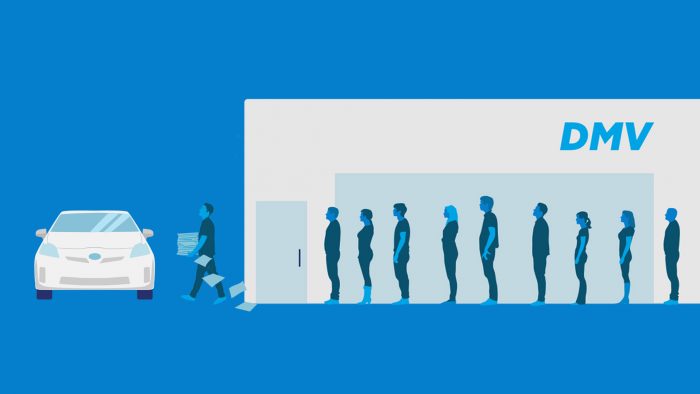Essential Paperwork Guide for Selling Your Car

Are you ready to embark on the journey of selling your car? Whether you're looking to upgrade, downsize, or simply move on, selling your car can be a smooth and rewarding process with the right preparation. One of the key elements that often gets overlooked is the paperwork involved in selling a vehicle. This guide will walk you through the essential documents and processes you need to handle before, during, and after the sale to ensure everything goes off without a hitch.
Why Proper Documentation is Crucial

When selling a car, proper documentation is not just about following the law; it’s also about ensuring:
- Legal Compliance: Ensuring all legal requirements are met protects both the buyer and the seller.
- Peace of Mind: Having all paperwork in order can prevent potential disputes or claims down the line.
- Increased Buyer Confidence: Buyers are more likely to trust a sale where documentation is clear and complete.
The Essential Paperwork for Car Sale

Let’s delve into the documents you’ll need:
Vehicle Title

The vehicle title, also known as the Certificate of Title or Title Deed, is the primary document proving ownership. Here’s what you should know:
- The title should be free of liens or you need to pay off any outstanding loans first.
- If there are any issues with the title, such as missing signatures or previous owner details not removed, these must be rectified.
Bill of Sale

A bill of sale acts as a receipt for the transaction and should include:
- Details of both the buyer and the seller.
- The vehicle’s make, model, year, VIN, and mileage.
- The sale price and date of sale.
- Any warranties or agreements regarding the condition of the car.
Odometer Disclosure Statement

This is required by federal law to prevent odometer fraud:
- It must show the true mileage of the car or state if the odometer does not work or has been replaced.
- Both the seller and the buyer must sign it.
Vehicle History Report

Although not legally required, providing a vehicle history report can:
- Show transparency and build trust with the buyer.
- Help prove you’ve taken care of the vehicle’s maintenance history.
Emissions and Safety Inspection Reports

Depending on your state or country:
- Emissions tests might be mandatory, especially if your car is older.
- Safety inspections ensure the car is roadworthy and not a liability.
Release of Liability

This form is crucial for:
- Transferring responsibility for the vehicle to the new owner.
- Protecting you from any fines or legal issues related to the car after the sale.
Notarized Forms

In some states, notarization of certain documents is required:
- This adds an extra layer of authenticity and legal standing to the transaction.
Owner’s Manual and Warranty Documents

Providing these can:
- Show your commitment to the sale process.
- Increase the value of your car in the buyer’s eyes.
How to Prepare for the Sale

Here’s how to get all your ducks in a row:
Collecting Documents

- Gather all necessary documents beforehand.
- If you have lost your title, contact your local DMV for a replacement.
Reviewing Title

- Make sure the title is clean, with no outstanding liens.
Completing Odometer Statement
- Fill out the odometer disclosure accurately.
Getting Inspections
- If required, ensure your car passes necessary inspections.
Preparing Bill of Sale
- Create a bill of sale that covers all essential details.
Handling the Sale

On the day of the sale:
Document Exchange
- Exchange all necessary documents with the buyer.
- Explain what each document does and why it’s important.
Notarization
- Get documents notarized if needed.
Release of Liability
- Submit the Release of Liability form to your DMV.
🔎 Note: Remember, laws and requirements can vary significantly from one state or country to another. Always check your local regulations!
Post-Sale Formalities

After the sale is complete:
Inform Insurance
- Notify your insurance provider to either cancel the policy or transfer it.
DMV Paperwork
- Submit any remaining forms to your DMV.
- This typically includes the Notice of Transfer and Release of Liability.
This guide offers a comprehensive overview of the paperwork needed for selling your car. With all the documents in place, you can ensure a smooth and lawful transfer of ownership, providing peace of mind for both you and the buyer. Proper documentation not only facilitates the legal aspect of the sale but also significantly reduces the risk of future disputes or issues arising from the transfer of ownership.
What should I do if I’ve lost the vehicle title?
+Contact your local DMV for a replacement. You’ll need to provide proof of identity and ownership, and there might be a fee involved.
Can I sell a car with a lien on it?
+Technically, yes, but it’s complicated. You’ll need to pay off the loan or have the buyer agree to take over the lien. The title must be released for transfer.
Do I need to provide a vehicle history report?
+No, but it can increase trust and facilitate the sale. Some buyers might even request one before making a decision.
What if the buyer refuses to sign a Release of Liability?
+This should raise red flags. The sale should not proceed without this crucial document. You might need to walk away from the sale or reconsider the buyer.
How long after the sale do I need to submit the Release of Liability?
+This varies, but it’s often recommended to submit within 5-10 days after the sale to protect yourself from any future liabilities.



